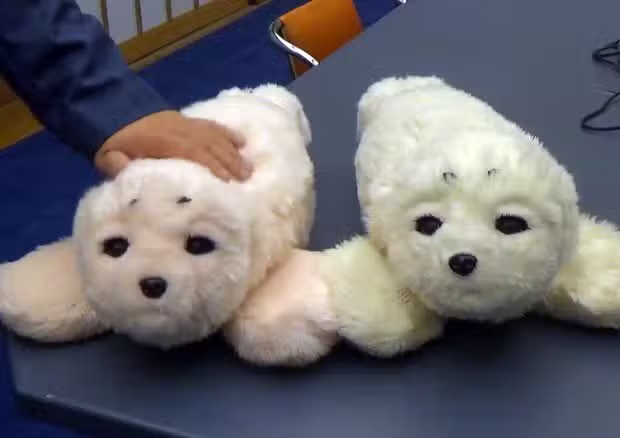Social Robots: When Machines Become More Human Than We Are

There are moments in life when you realize the world has changed — and you didn’t even notice. That moment came for me when I imagined what my grandmother, who passed away at 95, would say to a new kind of “companion”: a half-meter-tall robot with LED eyes and a gentle voice reminding her to take her medication. I know she would’ve smiled and said, “He’s more patient than all of you.” And then it hit me: this isn’t just about advanced technology. It’s about a profound shift in how we connect with each other. Social robots aren’t some distant dream — they’re already here. And they’re about to redefine how we think about intimacy, caregiving, and perhaps even love.
When Numbers Tell a Bigger Story
The global market for social robots reached $5.05 billion in 2024 and is projected to grow at an annual rate of 32.4%, hitting $30.38 billion by 2030. These figures are not just economic markers — they represent a practical response to the growing shortage of healthcare professionals and the widespread issue of social isolation. Companies like Blue Frog Robotics, Amy Robotics, and Intuition Robotics are leading this revolution, creating machines that go beyond tasks — they forge emotional connections.
But what exactly makes a robot “social”? The answer may lie in the European Union’s SPRING Project, which tested humanoid robots with over 90 patients and 30 healthcare workers in geriatric hospitals. Project coordinator Xavier Alameda Pineda explained that these robots must “accurately perceive and interpret signals from multiple humans to respond appropriately.” It’s not enough to recognize a voice; the robot must grasp context, read emotions, and adapt to the subtleties of human interaction. Not an easy task.

Artificial Empathy That Actually Works
Some of the most impressive results have come from pediatric applications. Recent studies reveal that even infants make meaningful eye contact with social robots, developing key observational and mimicking skills essential for growth. NAO and Pepper, two of the most widely used robots in this space, have proven particularly effective in supporting children on the autism spectrum.
“Robots provide predictable and repetitive interactions that encourage improved communication and social skills,” a study in Frontiers in Robotics and AI explains. What’s typically seen as a shortcoming in human relationships — predictability — becomes a strength here. For an autistic child, knowing how their robotic companion will respond offers a safe environment to explore and grow.
The Technological Loneliness Paradox
Of course, with any breakthrough, there’s a troubling paradox. As I’ve argued before, social robots risk replacing — rather than enhancing — human connection. If an elderly person prefers their robot companion over time with family, is that progress or a sign of something lost? Maybe it’s both. Or neither.
Take PARO, a robotic therapy seal used in dementia care. It costs over €5,000 but provides a kind of comfort that human caregivers often struggle to offer. It never tires, never gets frustrated, never rushes. Studies from the University of Denver show that these robots reduce anxiety and elevate patient moods — but they also raise a difficult question: Are we curing loneliness or institutionalizing it?

A (Slow) Landing in Our Homes
Looking ahead to 2025, social robots are expected to move from specialized settings into everyday households. The International Federation of Robotics forecasts a boom in domestic use — from companionship for isolated seniors to educational aids for children.
But are we ready? As explored in a February 2024 in-depth article, hybrid intelligence — the collaboration between humans and machines — demands a new kind of emotional and social literacy. Should we teach our children how to relate to empathetic machines? And how can we tell the difference between real empathy and programmed responses?
Social Robots: The Fine Line Between Care and Dependence
The ultimate challenge isn’t just technological — it’s ethical. A study in Science Robotics found that social robots can act as “conversation catalysts,” enhancing parent-child interaction during joint activities. But when a robot becomes a necessary bridge in human relationships, are we building connections — or dependencies?
Social robots may be the defining paradox of our era: in making machines more human, we risk becoming more mechanical. The real question isn’t whether these robots will work (they will). It’s whether we’re ready to live in a world where empathy can be coded and companionship bought.
Because in the end, my grandmother may have been right — the robot is more patient than we are. The real challenge? Becoming better than it.
Read the original article on: Futuro Prossimo
Read more: Study Finds AI Chatbots Still Easy to Manipulate into Giving Harmful Advice











Leave a Reply